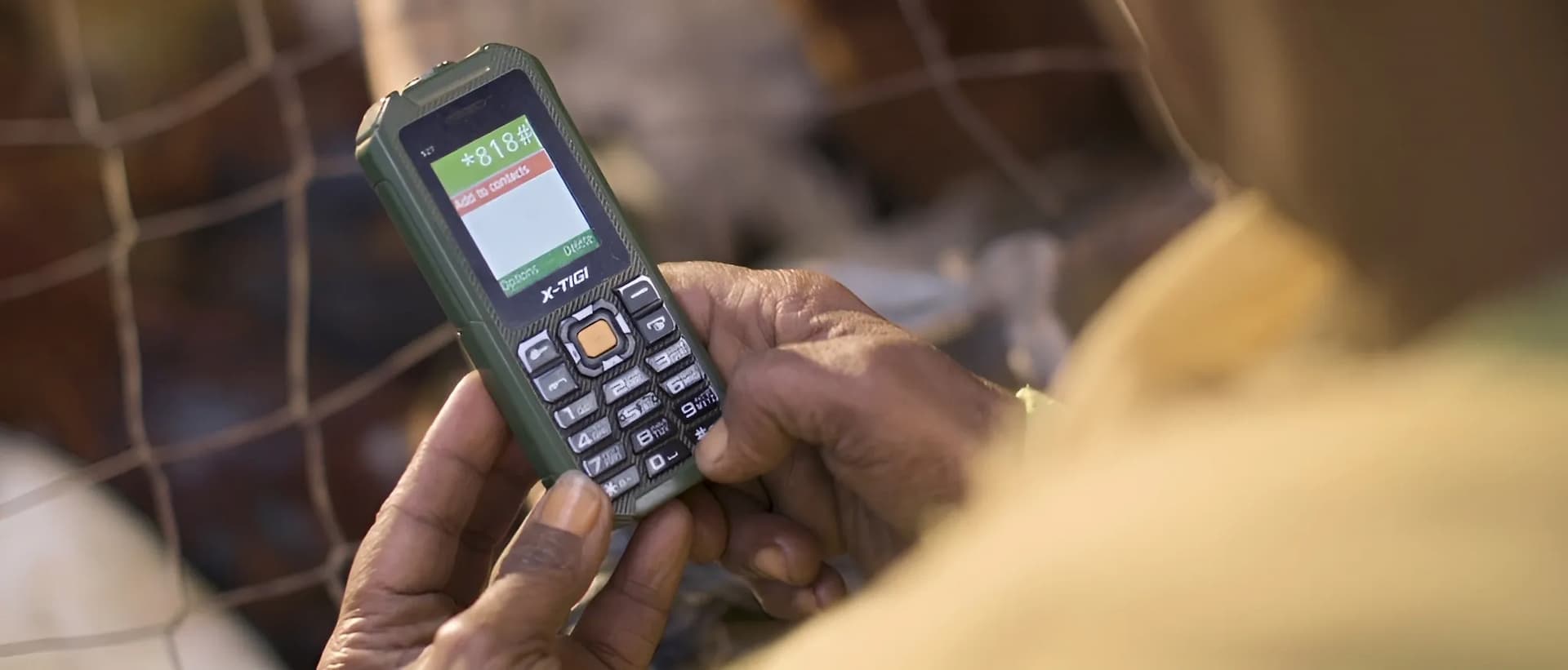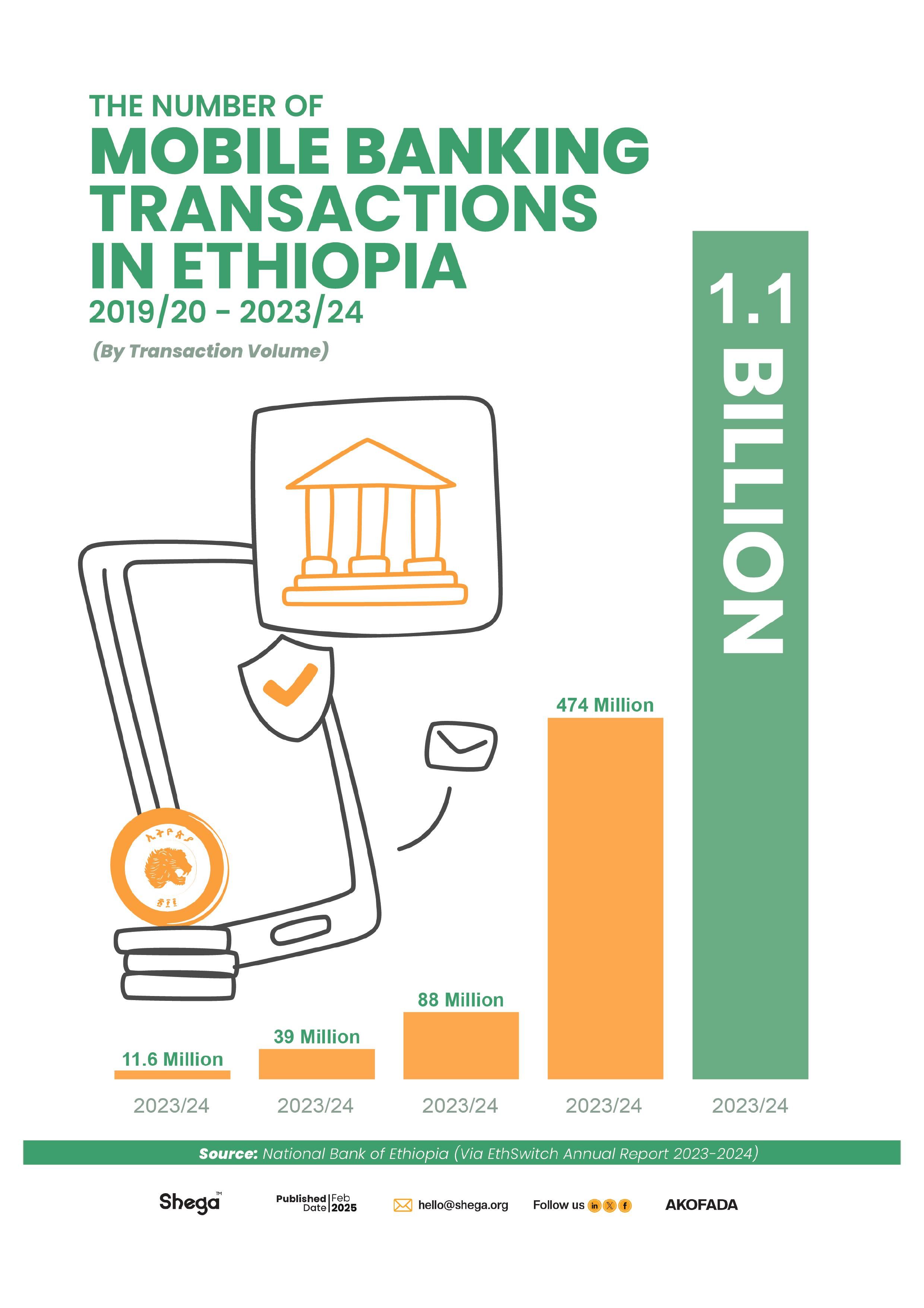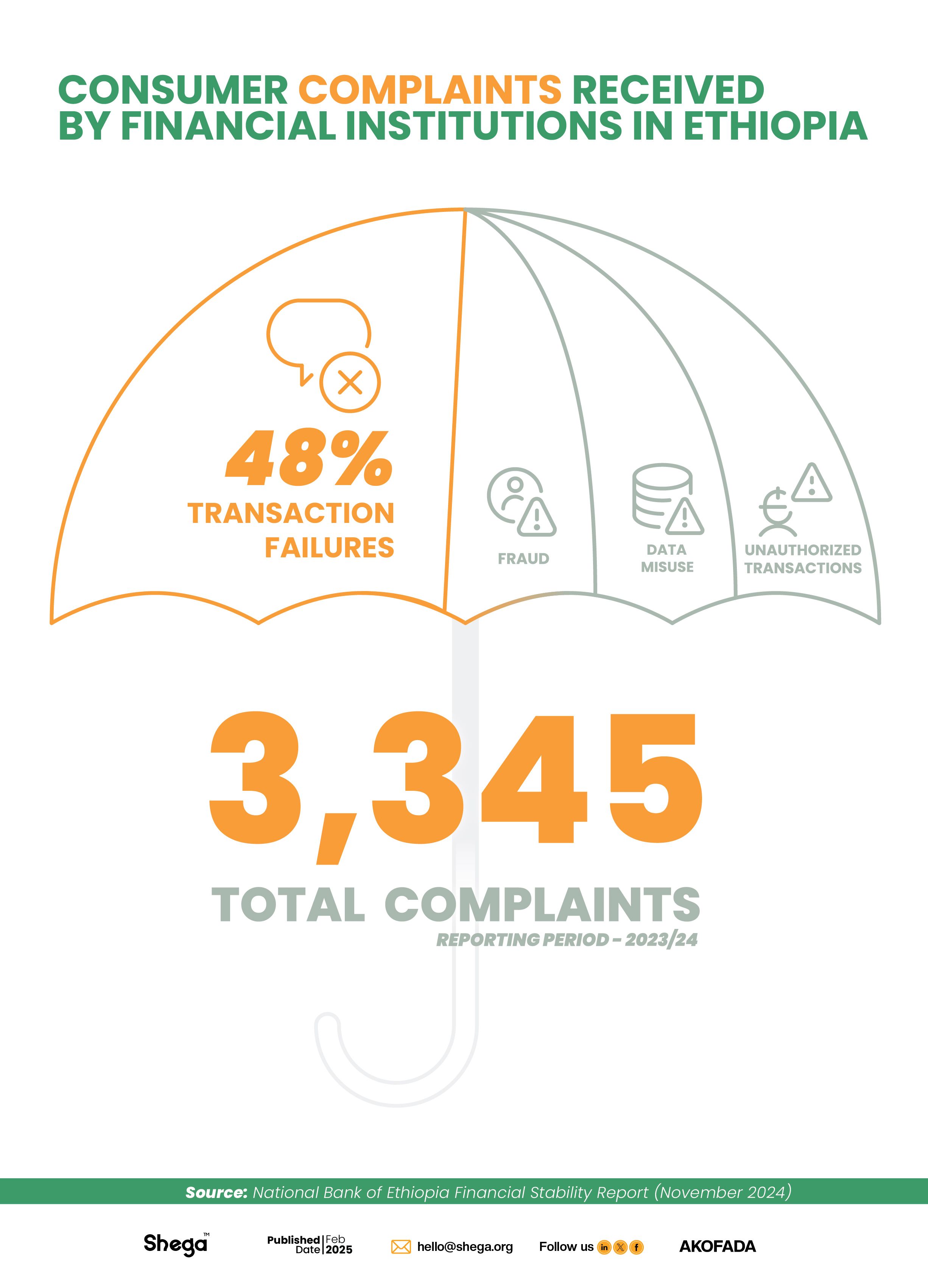Progress for 0 ad
Progress for 1 ad
Progress for 2 ad
Progress for 3 ad


Munir Shemsu
Addis Ababa, Ethiopia

Despite Ethiopia’s rapid adoption of digital financial services (DFS), gaps in payment confirmation continue to hinder trust and usability. Some businesses hesitate to accept mobile payments due to fraud risks, while users navigating P2G transactions still rely on physical receipts for security.
Strengthening transaction verification—through reliable real-time alerts, and tailored innovations—can accelerate DFS adoption.
This article is an output of AKOFADA (Advancing Knowledge on Financial Accessibility and DFS Adoption), a project working to increase knowledge and transparency within Ethiopia’s DFS ecosystem.
A few weeks back, as holiday festivities roared in full gear, I was wandering around my neighborhood looking for an open grocery shop. I managed to find one small establishment a little far from my home, which proved to be of little service. Dereje Asrat, the shop owner in his early 40s, said he does not accept online payments. With no alternative in sight and a gnawing curiosity, I attempted to persuade him otherwise and understand his decision.
Apparently, Dereje’s wife, who occasionally watches over the shop, had been swindled by someone who showed her a fake digital transaction receipt for items worth around 1,000 birr. A significant amount of money for small vendors mostly selling to nearby residents. The fraudster had asked for her phone number, which allowed him to fake a message to her phone number while flashing what appeared to be a payment receipt on his phone.
“I decided we would only accept cash,” Dereje recalls.
Strangely enough, he uses mobile money services to make transactions for his personal needs but avoids them for receiving business payments. While I eventually managed to get my items from Dereje’s shop, I also empathized with his experience. After all, why would he risk being defrauded by some stranger if he did not have complete faith in the payment confirmation process?
Even though potential fraud served as a barrier for vendors like Dereje, the ease, convenience, and speed with which transactions are confirmed play a major role in driving digital financial service (DFS) adoption across Ethiopia.
The issue is more pronounced if the receiver or vendor uses a feature phone. These devices have limited SMS storage, so their inboxes fill up quickly. If the seller cannot see a payment confirmation message, it risks compromising both the business relationship and the transaction itself.
Another layer of perspective to add is the varying implications of transaction confirmation. The absence of proof of payment could even entail legal and financial repercussions when it involves transfers to utility providers, tax offices, and other person-to-government (P2G) payments. Payments in rural areas experience more complexity as the compounding effects of low digital literacy, network unreliability, and minimal penetration of smartphones coalesce.
Couple all of this with the rise in incidents of fraud which cost Ethiopia’s banking sector 1.3 billion birr last year, the reality shows the necessity of a reliable transaction confirmation system.
Ethiopia has seen significant growth in the adoption of digital payments in recent years, driven by the expansion of mobile money services. By the end of the last fiscal year, the total number of mobile money accounts surged to 107 million, while mobile banking accounts exceeded 47 million.
Public sector service providers have also begun accepting digital payments as part of a broad national strategy adopted by the National Bank of Ethiopia. During the 2023-24 fiscal year, there were 1.11 billion mobile banking transactions and 744.88 million mobile money transactions nationwide.
The significance of payment confirmation is reflected in Ethiopia’s Electronic Transaction Proclamation, enacted in 2020, which laid the groundwork for the adoption of e-receipts. However, the absence of subsequent directives for nationwide implementation has left these provisions largely unfulfilled.
The law recognizes electronic messages as valid proof of payment, stating that they are admissible evidence in any legal proceedings. Additionally, the Licensing and Authorization of Payment Instrument Issuers Directive, which regulates mobile money service providers, states that users are entitled to receive an electronic receipt for transactions related to their accounts.
The directive also outlines the required details for a receipt, specifying that it must include the date, time, unique reference number, transaction amount, type, applicable fees, and details of the transacting counterparty.
While transaction confirmations via direct SMS messages to both the sender and receiver have become standard practice in the local DFS scene, the consistency of these alerts varies significantly.
Telebirr is among the leaders in this aspect through its more reliable SMS confirmations—a feature that has fueled its rapid adoption, especially in urban centers. As one of the most used digital financial services, telebirr is a major element of almost every e-government service needing payment.
Starting in mid-2023, the mobile money service became one of the mandatory digital payment options for fuel purchases from gas stations in Addis Ababa. Telebirr dispersed hundreds of agents across the capital to equip drivers with the basics of paying for fuel through the platforms. Early challenges in adoption have been largely overcome as more drivers became acquainted with the payment procedures.
However, the other dominant player in Ethiopia’s digital financial landscape, the Commercial Bank of Ethiopia (CBE), has mixed performance in sending transaction messages. While the bank provides instant transaction notifications via SMS, frequent network interruptions undermine its reliability. It’s not uncommon to hear recipients say, "I’m not receiving the SMS; call me when you send the money."
In contrast, progress has been made in increasing the acceptance of in-app-generated electronic receipts. Receipts downloaded from platforms like the CBE Mobile Banking App and telebirr provide detailed transaction information in the form of an official document. These receipts include company stamps along with key details such as the transaction time and the names of both the sender and receiver.
This development follows widespread concern that was sparked a year ago by viral videos depicting frustrated merchants who had unwittingly accepted fabricated payment receipts during mobile transactions.
In these cases, customers allegedly displayed seemingly legitimate receipts via banking apps as proof of payment, only for merchants to later discover the transactions never occurred. The issue stemmed from the lack of awareness to verify payments in real time through the app’s transaction history. As a result, businesses were left at a loss, having already delivered goods or services without receiving payment.

DFS platforms in Ethiopia are primarily used for P2P transactions, and the shortcomings in payment confirmation are further exacerbated in P2G aspects.
Customers paying for electricity and water bills through digital payment options must request a manual receipt in person to have physical proof of payment. Additionally, while e-filing for tax procedures has grown significantly over the past five years, many taxpayers remain hesitant to complete the entire payment process digitally. They view retaining detailed physical documentation of tax payments as essential, driven by concerns over the potential loss of records without a physical copy.
Moreover, most P2G payments are used in the capital and a few other Ethiopian cities. With nearly 80% of Ethiopians residing in rural areas, the expansion of digital financial services largely hinges on success beyond urban centers. The high level of informality in Ethiopia’s business landscape further underscores the importance of enabling seamless payments, as nearly half of the country’s labor force is employed in the informal sector.
Enhancing transaction confirmation and proof of purchase verification methods can have profound impacts on expanding DFS adoption while formalizing segments of the economy.
In late 2019 a fintech sensation swept across India. Every small store and grocery shop seemed to have purchased small speaker boxes to deal with the rise in digital payment. Every time a purchase is made the speakers about five inches wide and plastered with the retailer’s QR code read out payment confirmation messages in multiple languages.
This was quite the benefit in a country where literacy rates are a concern. Neighborhood mom-and-pop stores and street vendors, who had traditionally shied away from paying for tech services, have warmed up to the speakers.
Paytm, the fintech company that first introduced the speakers, experienced a marked growth in demand as it deployed nearly one million boxes every quarter.
The speakers also helped to provide other financial services for merchants. Paytm grew its merchant loans by 253% per year to reach 221 million dollars in 2023. Above 85% of the loans were directed at merchants who had bought the speakers, suggesting a correlation to a deepened financial sector.
As digital innovation continues to free payment from a domain purely restricted to banks, there is ample space for experimentation and research. A recent technical note published by the World Bank characterizes payment innovation in three levels; changes in the way payment services are linked to accounts, evolutions in systems that process transactions, and changes in the way consumers interact with payments and the business model of payment service providers.
Ethiopia’s central bank can learn from the experiences of countries like Ghana, which have six categories of fintech licenses to minimize risks associated with payment innovations. A tiered approach has allowed smaller payment service providers to experiment and potentially scale up into a higher license category. South Africa’s Intergovernmental Fintech Working Group has adopted a distinct approach to testing and learning. Its regulatory sandbox launched as a joint initiative that is showing promising signs of allowing innovation and drafting necessary legal oversight capabilities. The recently established fintech sandbox in Ethiopia could also set the stage for trying out new transaction confirmation solutions tailored to Ethiopia’s unique socio-economic landscape.
Partnerships with institutions like the UK-based Payment Systems Regulator which laid out Confirmation of Payee protocols could also prove illuminating.
Moreover, tech companies linked through APIs with established DFS providers can explore ways of evolving payment confirmation. There is no crystal ball and very little in the form of a perfect solution that can be prescribed, but the failure to explore tools in payment confirmation could serve as a subtle but pressing barrier to DFS adoption.
A notable development in addressing the payment confirmation gap in organizations and businesses that have multiple staff has recently come from Dashen Bank's new super app. Unlike traditional mobile banking accounts limited to a single user, the Dashen Bank Super app has a merchant app that allows multiple users to operate under the same account, similar to an Enterprise Resource Planning (ERP) system. Account owners can assign different roles—such as cashiers, waiters, and sales personnel—with varying levels of access.
Multiple payment access points are generated via the merchant app, with unique identifiers like numbers or QR codes assigned to these payment channels. Payments made through these channels are instantly tracked, with the merchant app displaying exactly where the payment originated. Employees can install the app on their devices and receive real-time alerts when payments are made, eliminating the need for screenshots or manual verification.
Another key area for improvement is the transaction history feature on DFS platforms. Some digital payment apps in Ethiopia limit users to viewing only their last 30 transactions, which is insufficient for businesses handling high volumes of online payments. In addition to increasing this limit, features like filtering transactions by date, sender, and amount should be introduced to enhance usability.

Lack of trust is among the major barriers to DFS adoption, particularly in emerging and developing economies. Even when governments set compulsory conditions demanding the use of digital payments, they can't bring about frequent use without a willing customer base. Enabling instant payment systems that empower customers with seamless, transparent, and easy transaction and payment confirmation tools goes a long way in building trust in digital payments. Protecting users from fraud while granting them an easily accessible tool to document their transactions will set the foundations for trust.
As Ethiopia accelerates the role of e-governance services, equipping the public with an instrument of confidence against authorities could allure more users to digital finance tools. Minimizing the room for dispute in tax reports, utility bills, and permit payments will serve as a crucial incentive for users. Fears of being inconvenienced might be offset by the benefits of precision and reliability granted by digital payment tools. An overlooked use case in the form of convenience for customers of public services could arise by merely evolving payment confirmation capacities.
Accelerated DFS adoption in Ethiopia is pinned on successfully integrating tools tailored to local contexts. Granting users ease, safety, and security in payment confirmation procedures will pay unprecedented dividends for expanding financial inclusion and digital financial services in Ethiopia.
👏
😂
❤️
😲
😠

Munir Shemsu
Munir S. Mohammed is a journalist, writer, and researcher based in Ethiopia. He has a background in Economics and his interest's span technology, education, finance, and capital markets. Munir is currently the Editor-in-Chief at Shega Media and a contributor to the Shega Insights team.
Your Email Address Will Not Be Published. Required Fields Are Marked *